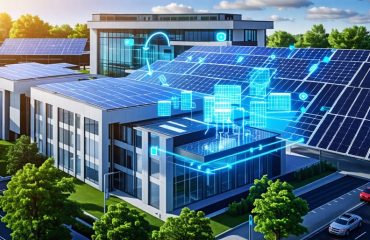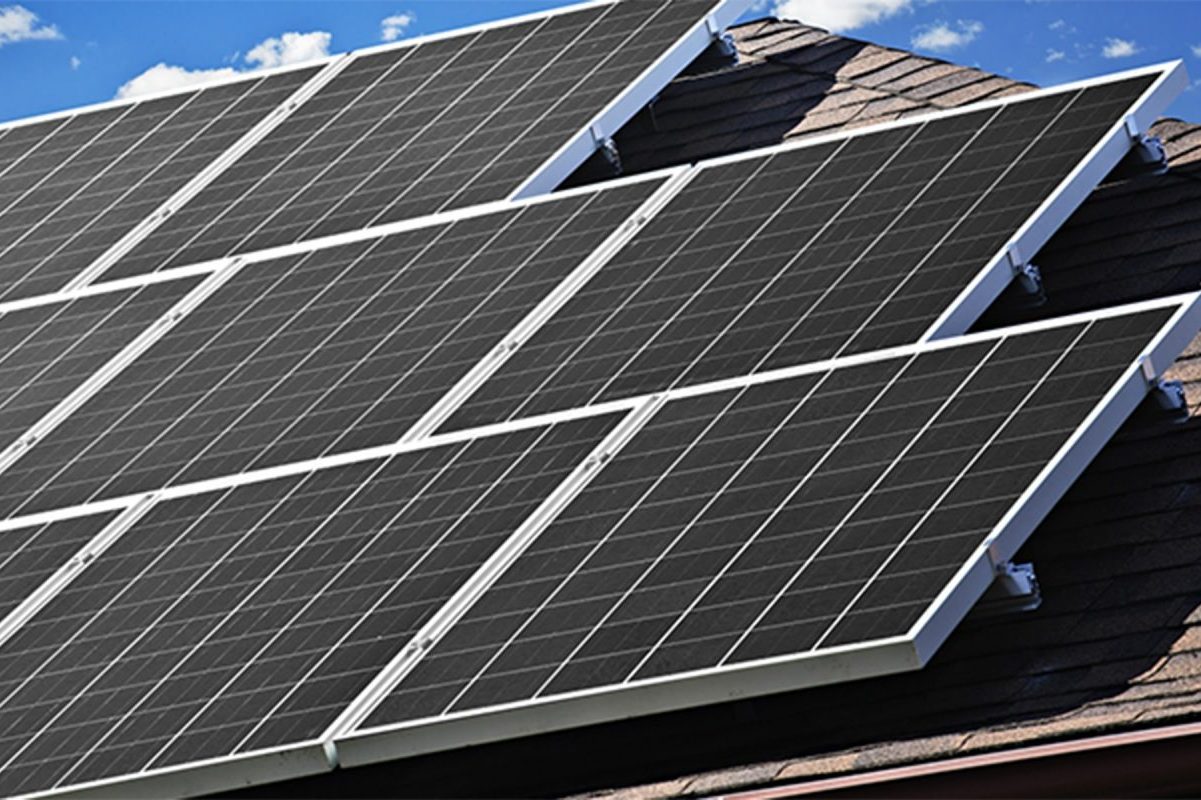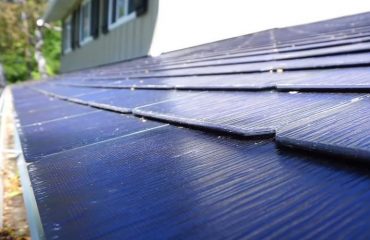Achieve energy independence with solar power and break free from reliance on the grid. Going solar empowers homeowners to generate their own clean, renewable electricity right on their rooftops. Solar panels harness the sun’s abundant energy, converting it into usable power for your home and reducing or eliminating your need to purchase electricity from utility companies. With advancements in solar technology and declining installation costs, energy independence through solar is more attainable than ever before. Take control of your energy future, insulate yourself from rising utility rates, and contribute to a healthier planet by embracing the power of solar energy.

How Solar Panels Work
Photovoltaic Cells
Photovoltaic (PV) cells are the heart of solar panels, converting sunlight directly into electricity. Made from semiconductor materials like silicon, these cells are arranged in a grid-like pattern on the panel’s surface. When sunlight hits the cells, it knocks electrons loose from their atoms, allowing them to flow through the material to produce an electric current. This process, known as the photovoltaic effect, generates direct current (DC) electricity, which is then converted to alternating current (AC) by an inverter for use in your home. The more intense the sunlight, the more electricity the PV cells generate. With no moving parts and a long lifespan, PV cells are a reliable, low-maintenance way to harness the sun’s energy and reduce your reliance on the grid. By installing solar panels with high-quality PV cells, you can take a significant step towards achieving energy independence for your home.
Inverters and the Grid
Solar panels generate direct current (DC) electricity, which must be converted to alternating current (AC) for use in homes and on the grid. This is where inverters come into play. Inverters convert DC to AC, making solar energy compatible with household appliances and the electrical grid. Once converted, the AC electricity flows to your home’s main electrical panel, powering your lights, appliances, and electronics. Any excess energy generated by your solar panels is fed back into the grid, often earning you credits on your utility bill through net metering programs. This process, known as grid-tied solar, allows you to reduce your reliance on the grid while still having access to electricity when your panels aren’t producing enough energy, such as at night or on cloudy days. With the right inverter setup, you can enjoy the benefits of clean, renewable energy while maintaining a seamless connection to the grid.

Benefits of Going Solar
Reduce or Eliminate Electricity Bills
Generating your own solar power can significantly reduce or even eliminate your monthly electricity bills. By harnessing the sun’s energy, you can power your home during the day and feed excess energy back into the grid, earning credits on your utility bill through net metering programs. With solar panels, you’re essentially creating a mini power plant on your roof, producing clean energy that offsets your consumption from the grid. This means you’ll be less reliant on your utility company and can enjoy substantial savings on your energy expenses over the long term. In some cases, homeowners with solar can completely eliminate their electricity bills, especially when combined with energy-efficient practices and appliances. While the upfront cost of solar installation may seem significant, the long-term financial benefits are clear – lower or no electricity bills, protection against rising energy rates, and potentially even a source of passive income.
Earn Tax Credits and Rebates
Installing solar panels can qualify homeowners for various tax credits and rebates, making the transition to clean energy more affordable. The federal government offers a solar investment tax credit (ITC), which allows you to deduct a significant portion of your solar installation costs from your federal taxes. Many states and local governments also provide additional incentives, such as property tax exemptions, sales tax exemptions, and cash rebates. These financial benefits can substantially reduce the upfront cost of going solar, making it an attractive option for budget-conscious homeowners. By taking advantage of these incentives, you can enjoy the long-term savings and environmental benefits of solar energy while minimizing your initial investment.
Increase Home Value
Installing solar panels can significantly increase the value of your home, making it more attractive to potential buyers. According to recent studies, homes with solar energy systems sell for approximately 4.1% more than comparable houses without solar. This translates to an additional $9,274 for the median-valued home in the U.S. Solar panels are seen as a desirable feature, as they offer long-term savings on energy bills and contribute to a more sustainable lifestyle. As more homebuyers prioritize energy efficiency and green living, having a solar-powered home can give you a competitive edge in the real estate market.
Protect Against Rising Energy Costs
As utility rates continue to rise over time, locking in lower electricity costs through solar energy can provide long-term financial benefits for homeowners. By generating your own clean energy from the sun, you can protect yourself against unpredictable energy price hikes and enjoy more stable monthly bills. Solar panels have a lifespan of 25-30 years, allowing you to hedge against rising electricity rates for decades to come. Additionally, many solar financing options, such as leases or power purchase agreements (PPAs), offer fixed monthly payments that can be lower than your current utility bills. By going solar, you not only gain energy independence but also safeguard your budget from the impact of increasing energy costs. With the potential for significant savings over the life of your solar system, investing in solar energy is a smart choice for both your wallet and the environment.

Battery Storage and Energy Independence
Storing Excess Solar Energy
Storing excess solar energy is a game-changer for energy independence. With the right battery storage system, you can save the surplus electricity your panels generate during sunny hours for later use. This means you can power your home at night or on cloudy days without relying on the grid. Battery storage also provides a backup power source during outages, giving you peace of mind. When choosing a battery, consider factors like capacity, cycle life, and compatibility with your solar setup. Lithium-ion batteries are a popular choice for their efficiency and longevity. By investing in solar battery storage, you can maximize your energy independence, reduce your reliance on fossil fuels, and potentially save money on your electricity bills in the long run. Embrace the power of storing sunshine and take control of your energy future.
Protection from Outages
One of the significant advantages of energy independence through solar power is protection from outages. When the grid goes down due to storms, accidents, or other issues, your home can still have a reliable source of electricity. By combining solar panels with a battery storage system, you can store excess energy generated during the day for use at night or during outages. This means that even when your neighbors are left in the dark, your essential appliances, lights, and devices can continue running smoothly. Having a backup energy source provides peace of mind and ensures that your daily life isn’t disrupted by unexpected power failures.
Is Solar Right for You?
Sunlight Exposure
To determine if your home receives enough sunlight for solar panels, consider the direction your roof faces and any shading from trees or nearby buildings. South-facing roofs receive the most direct sunlight, making them ideal for solar, while east- and west-facing roofs can still be suitable. Assess shading throughout the day, as even partial shade can significantly reduce solar panel efficiency. If your roof is heavily shaded, trimming trees or exploring ground-mounted solar options may be necessary. Most solar companies offer free assessments to evaluate your home’s solar potential and provide personalized recommendations for optimal panel placement and sizing.
Roof Condition and Space
To determine if your roof is suitable for solar panels, consider its material, age, and condition. Asphalt shingles, metal, and tiles are all viable options. Older roofs may need repairs or replacement before installation. Aim for a roof with at least 15-20 years of life remaining. Your roof should have enough unobstructed space to accommodate the number of panels needed to meet your energy goals. A general rule of thumb is that you’ll need about 100 square feet of roof space for every kilowatt of solar capacity. South-facing roofs with minimal shading are ideal for maximum sun exposure and energy production.
Financing Options
When it comes to financing your solar panel installation, there are several options available. Many homeowners choose to take out a solar loan, which allows them to own their system outright while spreading the cost over several years. Loan terms can vary, but most offer competitive interest rates and the ability to take advantage of federal tax credits.
Another option is a solar lease or power purchase agreement (PPA). With these arrangements, a third-party owns and maintains the solar panels on your roof, and you agree to purchase the electricity generated at a fixed rate, often lower than your current utility rates. While you won’t own the system, leases and PPAs can be an attractive choice for those who want to avoid upfront costs and maintenance responsibilities. To explore more about financing options, check out this comprehensive guide on solar financing options.
Ultimately, the best financing option depends on your individual circumstances and goals. Consult with a reputable solar installer to explore which path to energy independence is right for you.
Getting Started with Solar
Getting started with solar is a straightforward process that can lead to substantial benefits for your home and the environment. The first step is to assess your home’s suitability for solar by considering factors such as roof orientation, shading, and available space. Next, research and compare solar installers in your area to find a reputable company with experience and positive customer reviews. Your chosen installer will design a customized solar system based on your energy needs and conduct a site survey to ensure optimal panel placement.
Once you approve the design and financing options, the installer will handle necessary permits and schedule the installation. The actual installation process typically takes one to three days, depending on the size and complexity of your system. After installation, your solar panels will undergo final inspections and be connected to the grid by your local utility company. From that point forward, you can enjoy clean, renewable energy powering your home, reducing your reliance on the grid, and lowering your electricity bills. getting started with solar is an exciting journey towards energy independence and a more sustainable future.
In conclusion, residential solar energy offers a powerful pathway to energy independence for homeowners. By harnessing the sun’s abundant and renewable energy, you can reduce your reliance on the traditional electrical grid and take control of your energy future. Solar panels not only provide clean, sustainable electricity but also offer long-term financial benefits through reduced utility bills and potential tax incentives. With advancements in technology, such as efficient solar panels and reliable battery storage systems, achieving energy independence is more accessible than ever before. Whether you’re motivated by environmental stewardship, financial savings, or the desire for greater self-sufficiency, exploring solar energy for your home is a step worth considering. By assessing your home’s suitability, understanding the installation process, and working with reputable solar professionals, you can embark on a transformative journey towards energy independence. Embrace the power of the sun and discover how solar energy can empower you to create a more sustainable and self-reliant future for your household.









